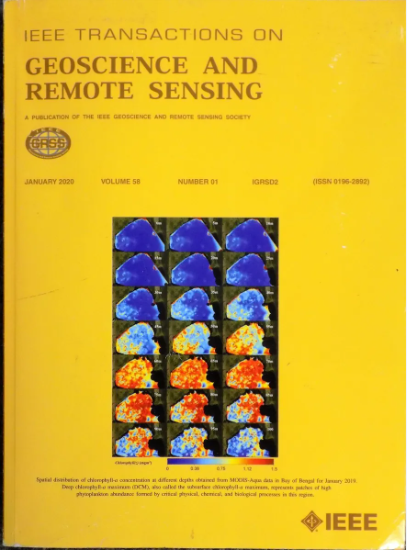利用射电天文源进行无源雷达探测的空间相干性制约因素
IF 7.5
1区 地球科学
Q1 ENGINEERING, ELECTRICAL & ELECTRONIC
IEEE Transactions on Geoscience and Remote Sensing
Pub Date : 2024-09-11
DOI:10.1109/TGRS.2024.3456049
引用次数: 0
摘要
最近的工作突出显示了利用木星的无线电辐射探测木星冰卫星的被动合成孔径雷达的模拟性能。在地面上,利用太阳作为回波探测、测距、成像和测量冰厚度的源的被动雷达探测最近也首次得到了展示。随着利用扩展的非相干射电天体源进行回波探测的无源雷达探空仪的不断进步,我们从射电天体源的空间相干特性方面重新审视了这一技术的潜在局限性。虽然之前的研究已经从脉冲展宽的角度考虑了被动探空的扩展源的空间相干性效应,但迄今为止还很少有研究对源尺寸、波长、入射角和高度对被动探空的空间相干性限制进行研究,而所有这些因素都制约着被动合成孔径雷达聚焦的潜在性能。从天线理论、范西特-泽尼克(VCZ)定理和被动探测的相干函数出发,我们推导出了这些参数和预期源范围所设定的额外约束,以估算使用射电天文源时的最大轨道高度;特别是,我们分析了使用太阳和侏罗纪爆发作为地球、火星和欧罗巴被动探测源的航天器的情况。我们的分析和模拟结果表明,地面实验在大入射角范围内都能满足相干性要求(脉冲展宽和空间相干半径),但在更高的高度,空间相干性有限,这就为轨道无源雷达探测设置了上限。因此,我们的研究结果使人们对被动探测技术及其可行性有了更丰富的了解,并为规划未来的行星和地面被动探测实验提供了关键的设计约束。本文章由计算机程序翻译,如有差异,请以英文原文为准。
Spatial Coherence Constraints on Passive Radar Sounding With Radio-Astronomical Sources
Recent work has highlighted the simulated performance of passive synthetic aperture radar (SAR) using Jupiter’s radio emissions to probe the icy moons of Jupiter. Terrestrially, passive radar sounding using the Sun as a source for echo detection, ranging, imaging, and measuring ice thickness has also been recently demonstrated for the first time. With increasing advancements in passive radar sounders that use extended, incoherent radio-astronomical sources for echo detection, we revisit a potential limitation of the technique in terms of the sources’ spatial coherence properties. While previous work has considered the spatial coherence effects of extended sources for passive sounding in terms of pulse broadening, there has been little work to date that has examined the spatial coherence constraints for passive sounding imposed by source size, wavelength, incidence angle, and altitude—all of which govern the potential performance of passive SAR focusing. Starting from antenna theory, the Van Cittert-Zernike (VCZ) theorem, and the coherence function for passive sounding, we derive additional bounds set by these parameters and the expected source extent to estimate the maximum orbital altitudes when using radio-astronomical sources; in particular, we analyze the scenarios for a spacecraft using the Sun and Jovian bursts as sources for passive sounding of the Earth, Mars, and Europa. While the results of our analysis and simulations show that the coherence requirements (in terms of both pulse broadening and spatial radius of coherence) are met for terrestrial ground-based experiments up to large incidence angles, the limited spatial coherence at these greater altitudes creates an upper bound for orbital passive radar sounding. Our results therefore provide a richer understanding of the passive sounding technique, its viability, and a critical design constraint when planning future planetary and terrestrial passive sounding experiments.
求助全文
通过发布文献求助,成功后即可免费获取论文全文。
去求助
来源期刊

IEEE Transactions on Geoscience and Remote Sensing
工程技术-地球化学与地球物理
CiteScore
11.50
自引率
28.00%
发文量
1912
审稿时长
4.0 months
期刊介绍:
IEEE Transactions on Geoscience and Remote Sensing (TGRS) is a monthly publication that focuses on the theory, concepts, and techniques of science and engineering as applied to sensing the land, oceans, atmosphere, and space; and the processing, interpretation, and dissemination of this information.
 求助内容:
求助内容: 应助结果提醒方式:
应助结果提醒方式:


